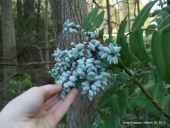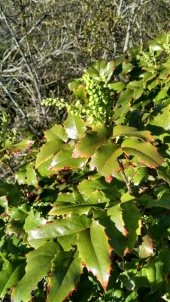

 6
6





If you have a bent for chemistry, you might be interested in some of the compounds that are believed to confer Balsamroot’s salutary powers. According to Michael Moore, author of Medicinal Plants of the Pacific West, both the stems and roots of Balsamroot contain an array of flavonoids, including 7-methyl-ether and 6-hydroxykaempferol, inulin, glycans, resins and terebinthine principles (mainly in the root), and caffeic acids similar to those found in Echinacea.

Dennis Lanigan wrote:Jocelyn, Many of my friends have cut up the roots and gently heated them in some raw honey. Here's an example of this: https://www.facebook.com/media/set/?set=a.652955961402093.1073741826.158010274230000&type=3
You may also want to check out Michael Moore's Medicinal Plants of the Mountain West which also describes how to make this arrowleaf balsam honey. It's amazing for lung problems and colds. http://www.amazon.com/Medicinal-Plants-Mountain-Michael-Moore/dp/0890134545
Native Americans relied on all parts of arrow-leaf balsamroot for food. Young leaves and shoots were peeled and eaten raw, boiled or steamed. The peeled roots have a bitter, strongly pine-scented sap. When cooked for several days (roasted or steamed) the root became edible and was often ground into meal and mixed with grease and made into cakes, or mixed with powdered berries and eaten with a spoon. The small, sunflower-like seeds were dried or roasted and pounded. The plant was also used for medicinal purposes, with the leaves being used as a poultice for burns, the roots boiled and the solution applied as a salve for wounds, cuts and bruises, and a tea derived from the roots used as a treatment for tuberculosis and whooping cough. Today, it is added to muffins, breads and granola, and can also serve as an emergency survival food. Modern herbal practitioners may use the root as an immunostimulant or expectorant.

QuickBooks set up and Bookkeeping for Small Businesses and Farms - jocelyncampbell.com
 1
1




Liz






 4
4




Liz Hoxie wrote:Jocelyn, you mentioned that the leaves are bitter. If you waited for the plant to bloom that may have been the reason. Try the young leaves and shoots, that may help. If you still use the bitter ones, try scrambling eggs into the steamed greens.
QuickBooks set up and Bookkeeping for Small Businesses and Farms - jocelyncampbell.com




Liz





 2
2













 2
2




Ricardo De Yakima wrote:Joseph Lofthouse do you eat the roots?
 4
4




 I grew up in eastern WA and always loved seeing arrowleaf balsamroot in bloom--deltoid balsamroot is a great alternative now that I live in western WA.
I grew up in eastern WA and always loved seeing arrowleaf balsamroot in bloom--deltoid balsamroot is a great alternative now that I live in western WA.
Cultivate abundance for people, plants and wildlife - Growing with Nature



 2
2




 1
1





 3
3




 4
4




 2
2




Being weird is easy. Making it mainstream is hard. Be brave! https://www.youtube.com/@healthygreenbrave

 3
3





 2
2




 2
2













